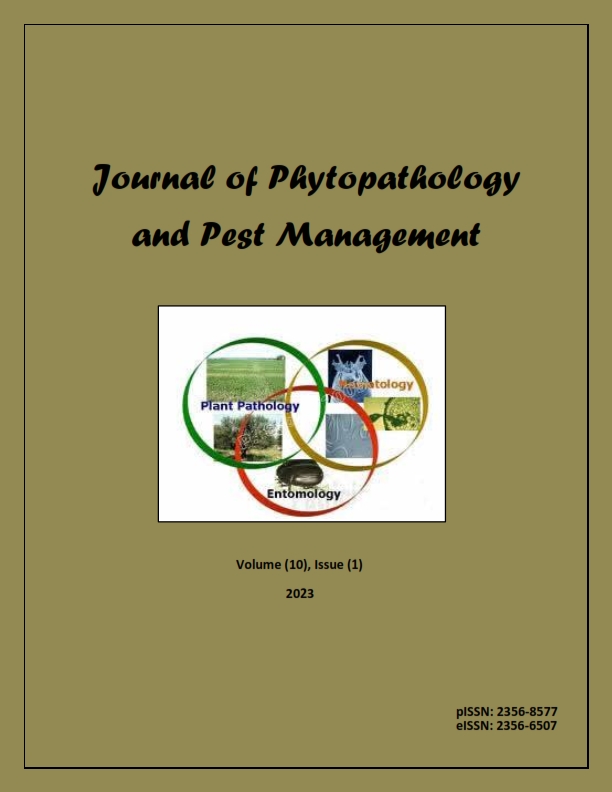Evaluation of Egyptian wheat (Triticum aestivum L.) genotypes for leaf rust resistance, yield losses and chemical properties
DOI:
https://doi.org/10.5281/zenodo.15188778Schlagworte:
Wheat, leaf rust, Puccinia tritician, yield losses, grain composition, biochemical, genotypeAbstract
This study was performed during two successive growing seasons at Nubaria province, Beheira Governorate, Egypt to evaluate nine genotypes under two investigation factors for diseases and yield traits against leaf rust disease caused by Puccinia triticina (P. triticina) and their effects on biochemical parameters of the plant, quantitative and grain composition yield. The susceptible check genotype Triticum spelta saharinsis (TSS), as well as the two susceptible Sids-1 and Gemmeiza-7 showed higher percentages of FRS% and values of AUDPC during the two seasons. Meanwhile, the partially resistant genotypes Line Shandweel-2(Shandweel-2), Line Nubaria-2(Nubaria-2), and Misr-3 demonstrated lower disease severity. The final rust severity (FRS %) values ranged from 16.67% to 97% across both seasons. Data was subjected analysis of variance (ANOVA) of randomized complete block design for each season. Genetic similarity and clustering dendrogram analysis results showed distinct differences between wheat genotypes based on the percentage of infection accumulated by the different accessions at the two study years. Leaf rust disease had an effect on chlorophyll and carotenoid contents in wheat genotypes. Protected genotypes showed higher chlorophyll contents than infected ones. Nubaria 2 had the highest chlorophyll and carotenoid contents in infected plants, with variations noted across all genotypes, while Nubaria 2 and Shandaweel 2 had higher phenolic content. The levels of oxidative enzyme (PO and PPO) were higher in most infected wheat genotypes, especially Nubaria 2, which had the highest PPO activity. The analysis of variance revealed significant differences in yield composition, and biochemical traits among wheat genotypes under infected and protected conditions. Genotypes Shandweel 2, Nubaria 2 and Sids 1 displayed lower losses in 1000 kernel weight and grain yield. This indicated that Sids 1 genotypes have a high level of tolerance to leaf rust infection. The second season showed higher losses in 1000 kernel weight and grain yield compared to the first season. Infected grains had higher dry matter, ash, and crude fiber, and changes in protein, gluten, and carbohydrate contents compared with protected genotypes. Principal component (PCs) measured traits in infected and protected treatment such as gluten and carbohydrate mg/g have negative correlation among them.
Metriken
Downloads
Veröffentlicht
Zitationsvorschlag
Ausgabe
Rubrik
ARK
Lizenz
Copyright (c) 2023 Journal of Phytopathology and Pest Management

Dieses Werk steht unter der Lizenz Creative Commons Namensnennung - Nicht-kommerziell 4.0 International.
Click here for more information on Licensing policy

.png)




